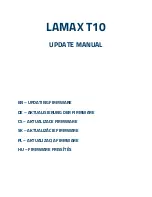
Camera interfaces
70
Prosilica GC Technical Manual V2.2.2
Notes on triggering
Trigger rules
•
The end of exposure will always trigger the next readout.
•
The end of exposure must always end after the current readout.
•
The start of exposure must always correspond with the interline time if
readout is true.
Term
Definition
User trigger
Trigger signal applied by the user (hardware trigger,
software trigger)
Logic trigger
Trigger signal seen by the camera internal logic (not
visible to the user)
Propagation delay (
t
pd
)
Propagation delay between the user trigger and the
logic trigger
Exposure
High when the camera image sensor is integrating
light
Readout
High when the camera image sensor is reading out
data
Trigger latency
Time delay between the user trigger and the start of
exposure
Trigger jitter
Deviation from the trigger latency time
Trigger ready
Indicates to the user that the camera will accept the
next trigger
Registered exposure time Exposure time value currently stored in the camera
memory
Exposure start delay
Registered exposure time subtracted from the
readout time and indicates when the next exposure
cycle can begin such that the exposure will end after
the current readout
Interline time
Time between sensor row readout cycles
Imaging
High when the camera image sensor is either
exposing and/or reading out data
Idle
High if the camera image sensor is not exposing and/
or reading out data
Table 18: Explanation of signals in timing diagram
User trigger pulse
The user trigger pulse width should be at least three times the width of the trigger
latency as indicated in
















































